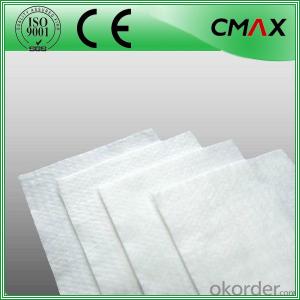Non Woven Double Punched Geotextile Fabric: A Revolutionary Material for Modern Construction
When speaking about modern construction and civil engineering projects, there is an increasing demand of innovative, strong and efficient materials. Recently one of the materials that has been in great focus is ‘non woven double punched geotextile fabric’. This fabric is not only textile but a multi-purpose solution with many advantages in different applications.
The Essence of Non Woven Double Punched Geotextile Fabric
Fundamentally, non woven double punched geotextile fabric is synthetic material which fuses the strength of polymers with the flexibility of textiles. It is manufactured by bonding short synthetic fibers together to form a dimensionally stable, nonwoven fabric. However, it resists tearing and wearing due to its structural integrity strengthened through the technique of double-punching; this feature makes it ideal for use in severe conditions.
Versatility in Application
The adaptability of this textile is just astonishing. It can be used for reinforcing soil structures as well as filtration and drainage during civil engineering works. Engineers and architects alike have come to develop a soft spot for its ability to sustain various loads as well as resisting degradation among other things.
Enhancing Soil Stability
One primary application area where non woven double punched geotextile fabric has been extensively used relates to improvement of soil stability. It serves as a separator by preventing intermingling between different types of soils thereby ensuring even load distribution. This becomes invaluable especially when constructing roads, embankments or retaining walls whose success relies on soil stability.
Filtration and Drainage
Another attribute that makes it unique is its role in filtration and drainage systems. Water can go through while retaining soil particles thus minimizing erosion hence keeping the project’s structure intact. It therefore performs two functions simultaneously making it indispensable in building dams, levees or any other water management system.
Durability and Longevity
This material is long-lasting as its name suggests. It has been designed to withstand all harsh conditions such as weather, chemicals, and physical forces. This in turn means that the life span of the projects where it is used becomes longer thus reducing regular maintenance and repairs.
Environmental Considerations
Today, where environmental sustainability is paramount non woven double punched geotextile fabric plays a key role. It’s made from recyclable materials and can be easily incorporated into eco-friendly construction works. Such approach not only cuts down on Construction related carbon footprint but also meets the emerging need for green infrastructure.
Personal Touch: A Fabric with a Heart
I have had the opportunity to interact with this fabric and I must say that it is a warm-hearted fabric which you can rely on. Beyond being just another material, it’s more like a fabric which has heart and it’s meant to support our structures at the time we are building them. Often invisible but always evident in the strength and stability of the schemes built upon it, non woven double punched geotextile fabric stands out as an unsung hero in construction industry.
Future Construction with Non-Woven Double-Punched Geotextile Fabric
The future of construction is closely tied to the use of non-woven double-punched geotextile fabric. This material will shape tomorrow’s infrastructure as we continue to innovate and explore new possibilities. It represents our dedication towards a stronger, more sustainable and highly efficient built environment.
Conclusion: A Fabric That Time Will Not Forget
To conclude, non-woven double-punched geotextile fabric is an amazing material that has revolutionized conceptualization in construction and civil duties. Its exclusive features as well as its adaptability and durability make it indispensable in contemporary projects. This textile will definitely be on the cutting edge in construction industry as we go further into the unknown territories, which is an embodiment of human intellectuality and pursuit for perfection in the built environment.







